Model T Ford Generator
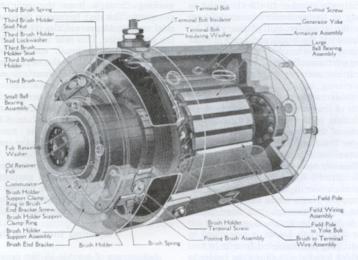
Read about the Ford generator and how a generator works here.
Try the interactive animation here
Ignition System
Jump to theModel T Ford magneto
Jump to the Model T Ford ignition coil information
Jump to ignition timing articles
The Model T Ford ignition system remained the same throughout the 19 years of production, even though the electrical system was supplemented with a starter, generator and electric lighting in 1919. Henry Ford designed the car with an internal magneto coil and magnet system, fixed to the flywheel of the engine. The magneto provides current to the four ignition coils, one for each cylinder, which in turn intensify the electrical charge to create a strong spark at the spark plug. The discharge from the coil is triggered by collapsing the coil field by earthing the each coil at the correct time by the timer, (commutator) mounted on the end of the camshaft on the front of the engine.
Magneto
The assembly is made up of 16 iron cores, wound with copper ribbon and linked to the coil next to it in a continual loop and terminating at the magneto post fitted to the top of the transmission cover. These coils are fitted to a ring which is in turn fixed permanently to the engine block. The flywheel has 16 "v" shaped magnets bolted to it, each magnet pole (north or south) sits next to the same pole of the neighbouring magnet.
As the flywheel (and magnets) turn, they pass the iron cores in the ring, the magnetic field inducing a current through the coil ring circuit up to the magneto post. The faster the flywheel spins, the higher the current produced.
See the pictures below:
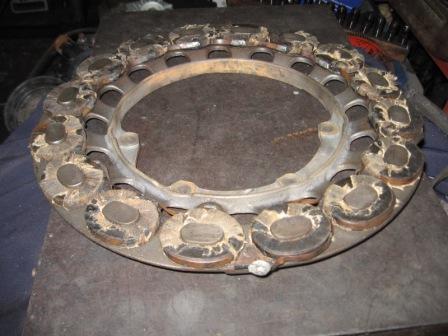
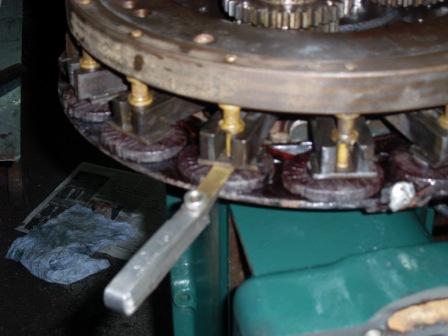
Ignition Coil
Each Model T Ford runs using four coils, one per cylinder, housed in a box that features contact points for a power supply in, contact point to the timer for each coil via a wiring loom and a contact terminal for the spark plug lead.
The style and location of coil boxes changed throughout the years the Model T was produced, but all do the same thing (with the early models including the ignition switch)with the style and location of the box also changing.
Each coil assembly is housed in a finger jointed timber box, filled (originally) with tar or pitch as its also known. This tar, not only holds the components in place, but adds to waterproofing and insulating the parts from each other.
The parts inside include a primary winding, a secondary winding, a condenser, connecting wires and a piece of glass to divide the components.
See below:
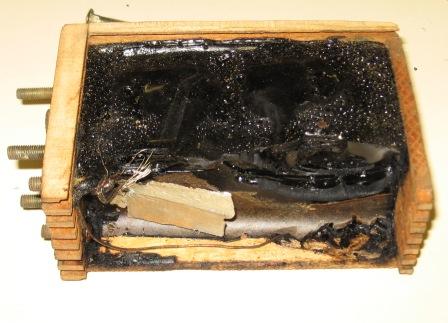
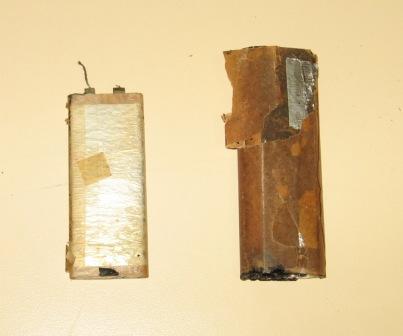
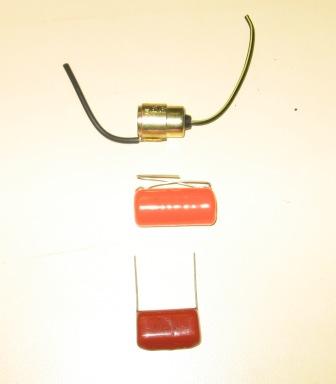
In the early cars, there was no battery or starting system provided, so the power supply to the coils magnified to create the spark at the plug leads, was solely produced by the magneto system. This meant that to start the car, the magneto and all the associated ignition systems must be in good condition and correctly cleaned and adjusted.
When the driver hand cranked the engine, they produced sufficient rotation of the magneto on the flywheel to generate the current to the coils. Once started the engine obviously maintained this rotation and the ignition system became self supporting in operation.
In later vehicles, fitted with a dry cell (in the day) battery and or electrical starting system, the car could be started either by switching to the magneto system and starting as above, or, to battery, where the battery provided the power to the coils to create the spark. All that was required, was to turn the engine over, to start the induction/compression cycle of the engine, thus providing a compressed fuel/air mix for the spark to ignite, subsequently starting the engine. This could be achieved by either hand cranking the engine over, or, using the electrical starter motor instead.
Timing
The timing of any internal combustion engine is essential to it's successful starting and operation.
Timing refers to, in the case of ignition, the point at which the spark is fired inside the cylinder containing the compressed fuel/air mixture. Firing too early causes predetonation, where the explosion starts to try and push the piston back down the cylinder, against its current movement upwards. Firing too late, means the piston has already begun to move back down, the explosive force is less effective in providing power to the engine and in most cases, the fuel has not burnt off properly as the piston commences rising on the exhaust stroke, forcing still burning fuel/air mix past the valve into the exhaust.
Both of these scenarios cause damage to the engine and significantly affect the power the engine produces.
The Model T Ford was designed like most cars of the day, with manually adjusted ignition timing. A lever mounted on the steering column was operated by the driver. This lever, via rods, rotated the timer cap in relation to the position of the roller mounted on the end of the camshaft, thereby altering the point at which the ignition system fires for each cylinder.
Below you will find a link to an article detailing the operation and importance of the timing of the ignition system.
Read the Model T Ignition Timing Article
Read the second Ignition Timing Article here
Return to Model T Central Technical Page
|






